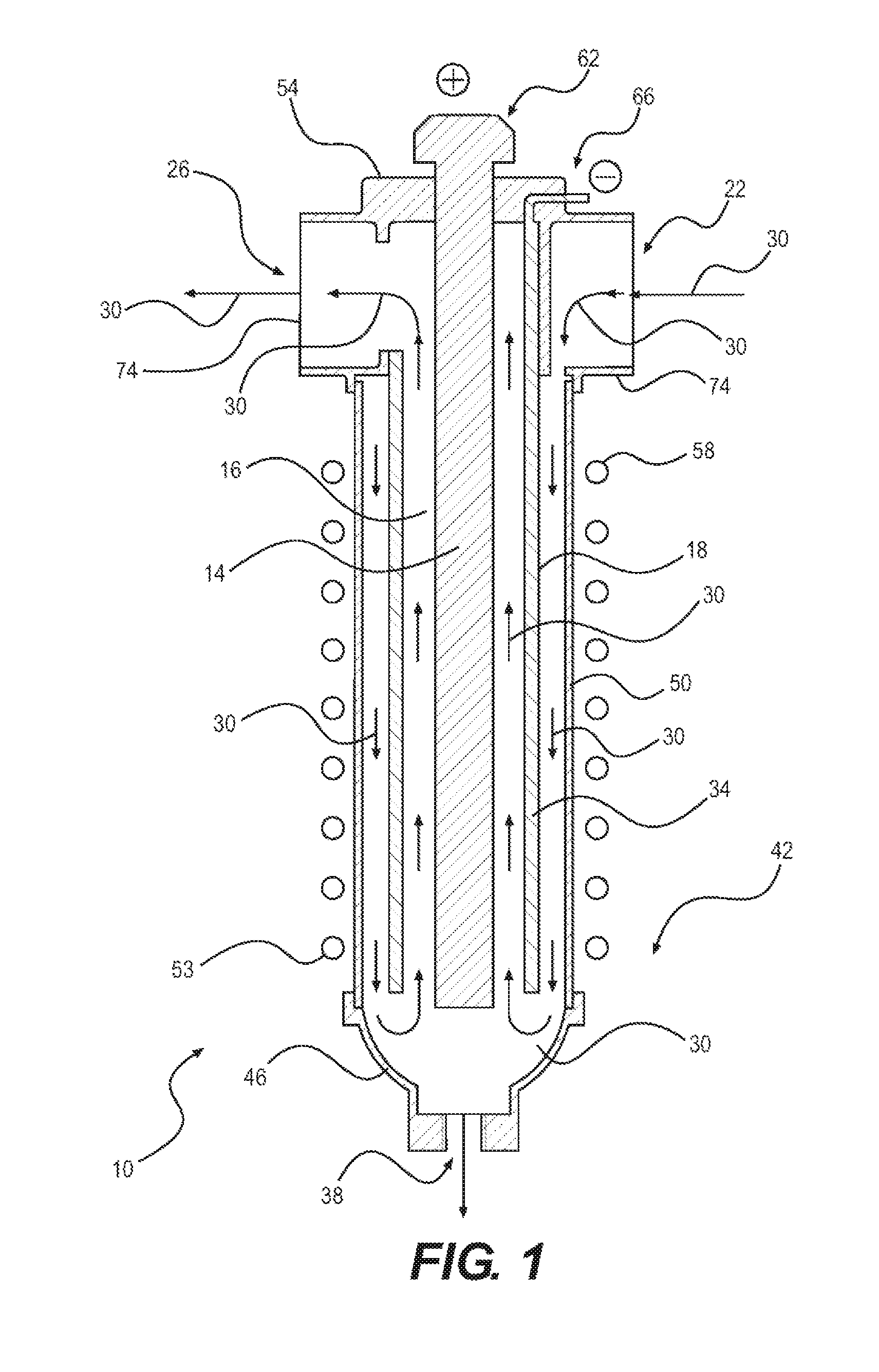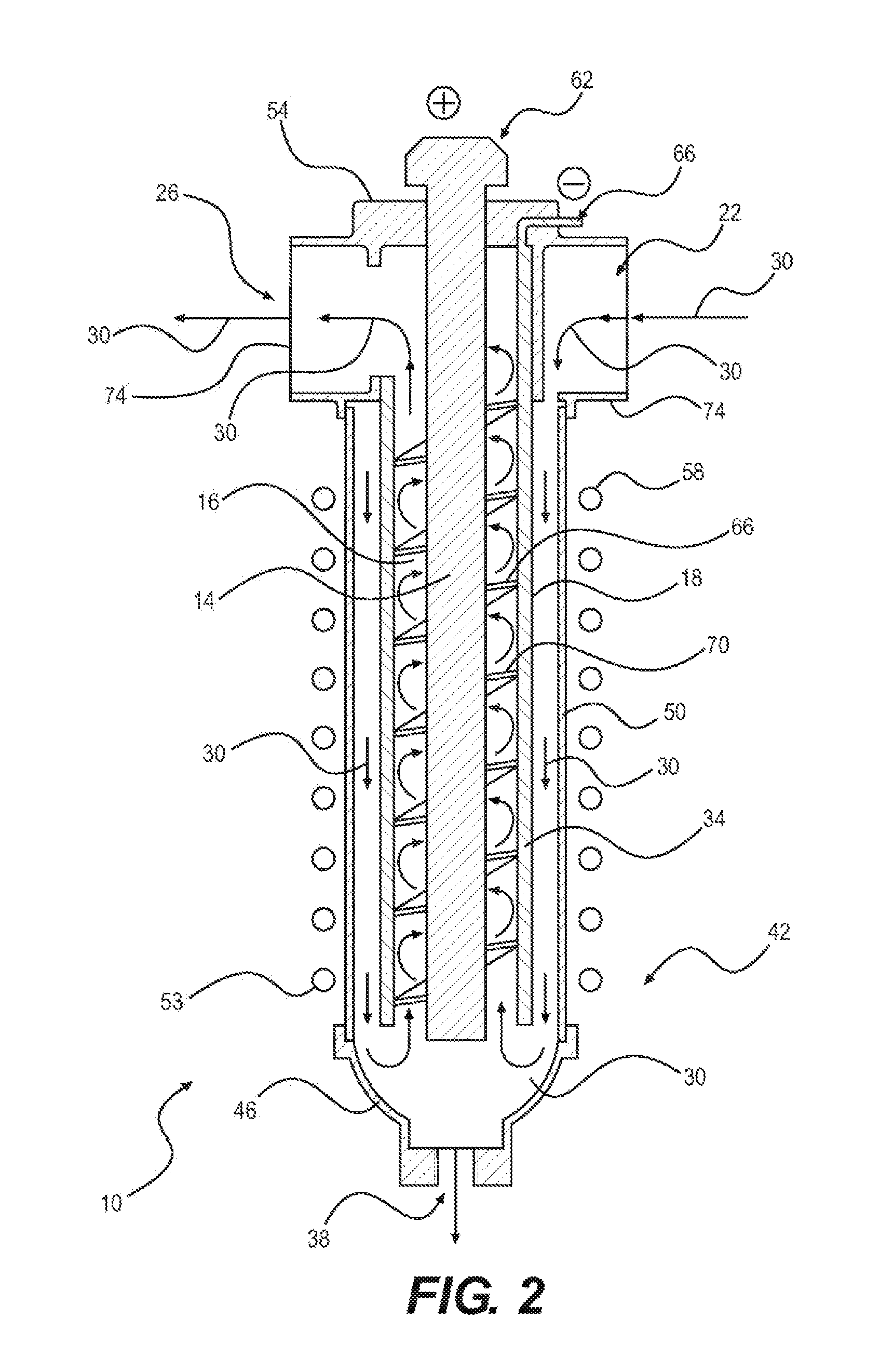Electrocoagulation for treating liquids
a technology of electrocoagulation and liquid treatment, which is applied in the direction of electrolysis process, water treatment multi-stage treatment, water/sludge/sewage treatment, etc., can solve the problems of increasing the cost of chemical coagulation, the difficulty of separating contaminants from liquids, and the significant issue of water pollution, so as to reduce the burden of maintenance requirements, simplify and speed up the maintenance operation, the effect of reducing operational costs
- Summary
- Abstract
- Description
- Claims
- Application Information
AI Technical Summary
Benefits of technology
Problems solved by technology
Method used
Image
Examples
Embodiment Construction
[0087]An exemplary electrocoagulation module 10 is illustrated in FIG. 1 with a section view allowing a better view of its construction. The electrocoagulation module 10 comprises an anode module 14 and a cathode module 18 adapted to interact in an electrolytic process producing electrocoagulation of undesirable colloidal particles. The electrocoagulation module 10 of the present embodiment includes an inlet 22 and an outlet 26 configured to respectively receive and extract the fluid to and from the electrocoagulation module 10. The fluid, once introduced in the electrocoagulation module 10, follows a path or a fluidic circuit configured to put the fluid in communication with the electrolytic process that is produced in the electrocoagulation module 10. In the present example, the fluid follows a path identified by a series of arrows 30 defined by internal walls 34. A pump, which is not illustrated in FIG. 1, pushes the fluid through the electrocoagulation module 10. An opening 38 d...
PUM
| Property | Measurement | Unit |
|---|---|---|
| shape | aaaaa | aaaaa |
| temperature | aaaaa | aaaaa |
| electrical barrier | aaaaa | aaaaa |
Abstract
Description
Claims
Application Information
 Login to View More
Login to View More - R&D
- Intellectual Property
- Life Sciences
- Materials
- Tech Scout
- Unparalleled Data Quality
- Higher Quality Content
- 60% Fewer Hallucinations
Browse by: Latest US Patents, China's latest patents, Technical Efficacy Thesaurus, Application Domain, Technology Topic, Popular Technical Reports.
© 2025 PatSnap. All rights reserved.Legal|Privacy policy|Modern Slavery Act Transparency Statement|Sitemap|About US| Contact US: help@patsnap.com



